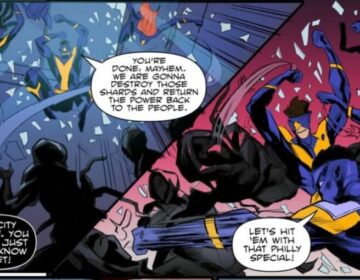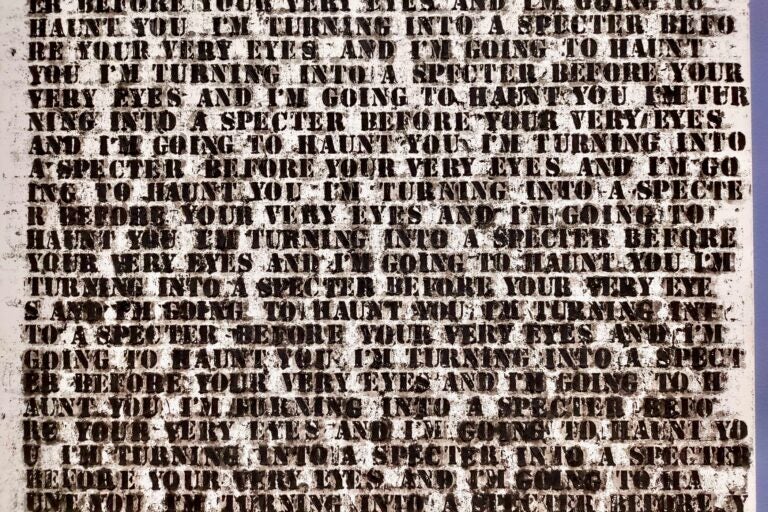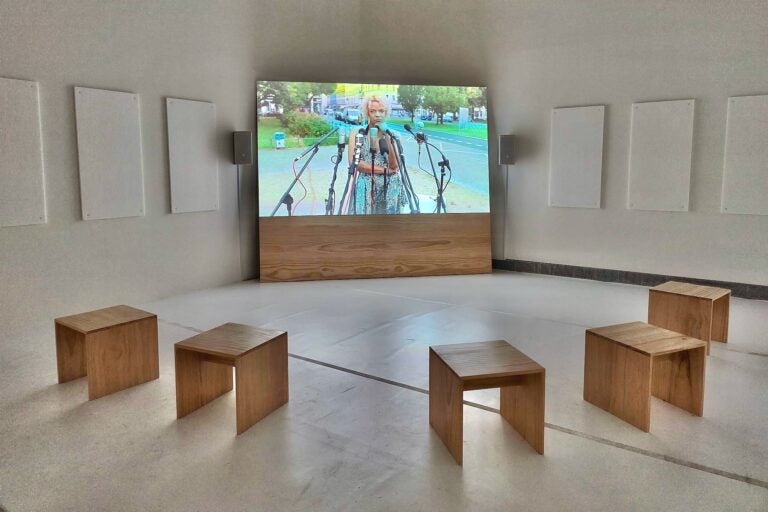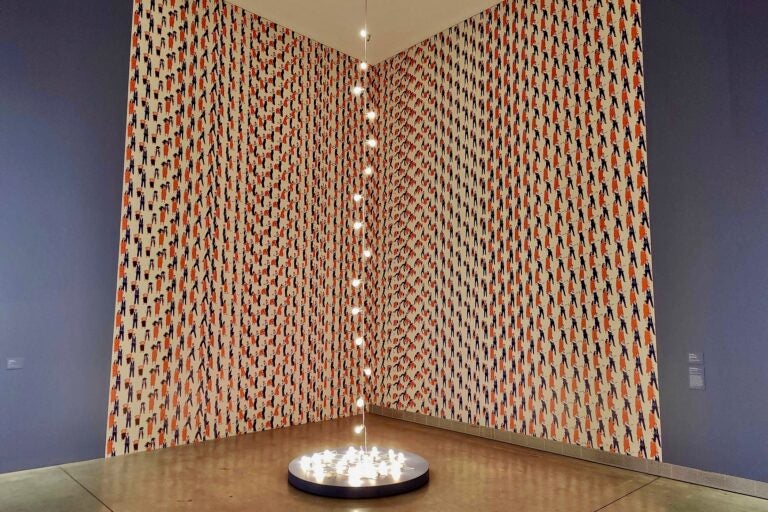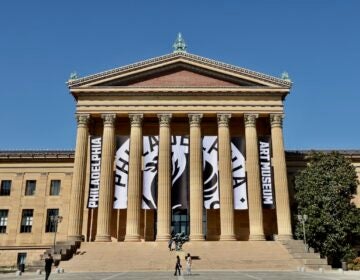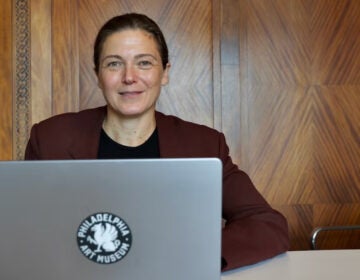Let’s be still: Philly Art Museum shows political art with the volume turned down
“What Times Are These?” is an antidote for election exhaustion.
From Philly and the Pa. suburbs to South Jersey and Delaware, what would you like WHYY News to cover? Let us know!
As the election draws closer and polls grow tighter and advertisements get louder, many in Pennsylvania are experiencing feelings of voter fatigue. A recent Pew Research Center poll shows two-thirds of adults are “exhausted” by politics.
On Monday, Philadelphia will once again be at the center of the national show when Vice President Kamala Harris brings her whirlwind campaign to the steps of the Philadelphia Museum of Art with a major rally on the eve of the election.
Meanwhile, inside the Art Museum is a much quieter display of political messaging.
“What Times Are These?” opened Oct. 19 and is a sparsely hung exhibition of work by artists using the power of suggestion or outright silence to make their political points.
“I think many of us have encountered political art that can feel like we’re being hammered over the head,” said curator Eleanore Nairne. “It’s not always the best way to appeal to people’s humanity or to encourage people to be dwelling with work.”
Nairne is the museum’s new curator of contemporary and modern art, a position she started in February. “What Times are These?” is her first exhibition in that role, designed to be both relevant to the current moment and a respite from it.
“I thought it would be interesting to do something about artists who are political, but in more lateral ways,” she said. “Maybe not in explicit or partisan ways, but who find very powerful ways to inspire a sense of civic agency.”
Ironic for a show that purports to be about silence: it starts with noise. Upon entering the museum, atop its Grand Staircase where normally a golden statue of the goddess Diane presides, a film screen has been hung onto which is projected filmmaker Steve McQueen’s “Static,” a seven-minute looping film of the Statue of Liberty shot from a helicopter circling around it.
The soundtrack is the noise of the helicopter blaring out of speakers arranged in the space, such that the museum is offering noise-canceling headphones at the coat check to those who ask.
At one point during the film, McQueen fades those helicopter sounds down to nothing.
“What makes it very moving is that when those chopper blades, that kind of thunderous sound, subsides there’s this incredible serenity to the piece,” Nairne said.
McQueen shot the Statue of Liberty in 2009, just after the Obama administration reopened it to the public after having been closed since the 9/11 attacks. Because of that unspoken context, “Static” becomes a meditation on American ideals of liberty in an era of global terrorism.
Deeper inside the museum, the rest of “What Times are These?” occupies a single gallery with a dozen works, dominated by patterned wallpaper by Philadelphia artist Nick Cassway. “Above the Sound of Ideologies Clashing” (2016) depicts a man and a woman in various stages of conflict. The recurring and predictable stages of fighting in the pattern wrapping the room are analogous to the patterns of election cycles.
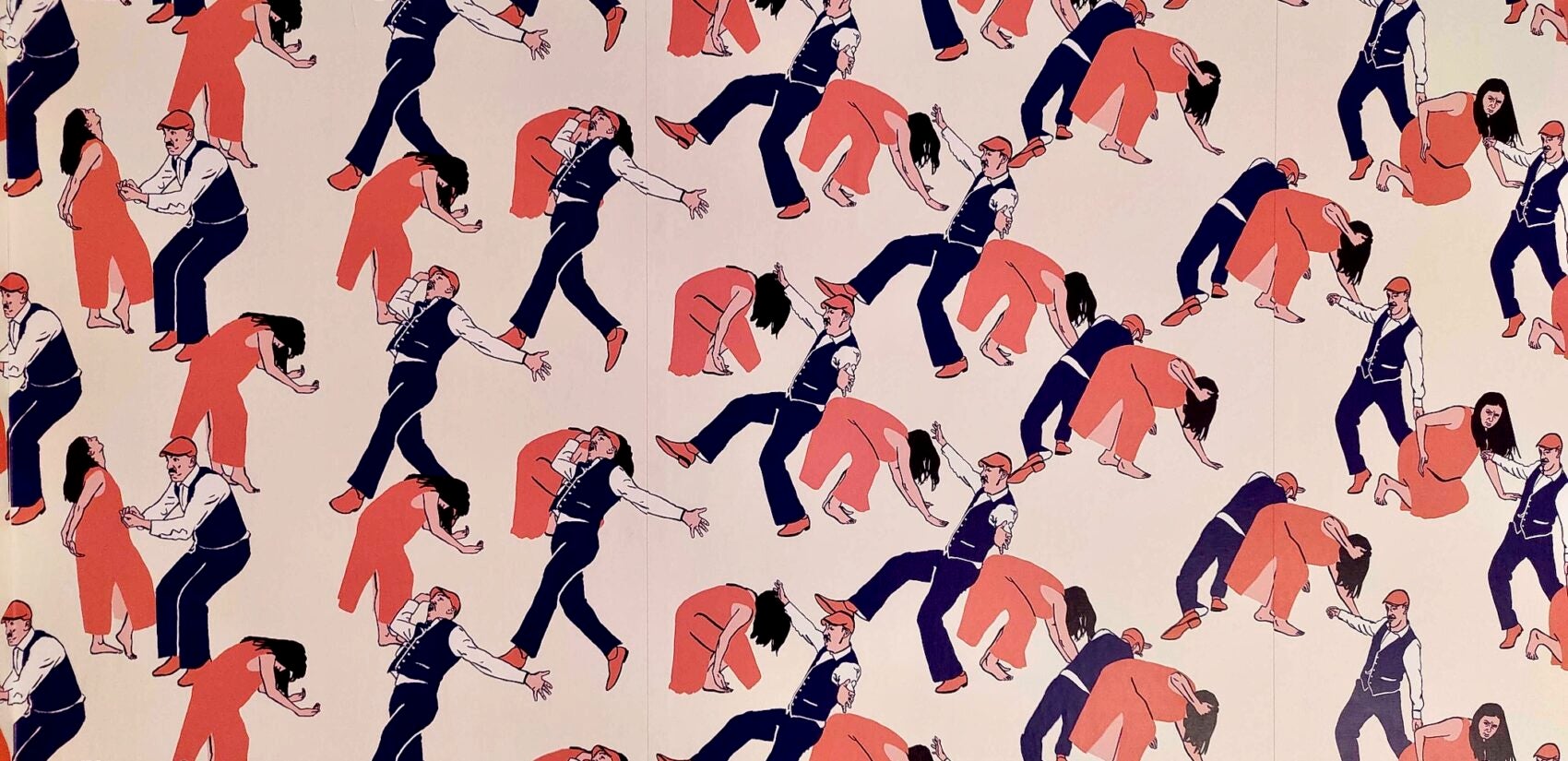
A sculpture of lightbulbs strung from the gallery’s high ceiling, “Untitled (Petit Palais)” by the Cuban-American artist Felix Gonzalez-Torres, was made in memory of his lover Ross Laycock, who died from AIDS in 1991. Laycock contracted the disease during the administration of Ronald Reagan, which was criticized for thwarting research into the public health emergency.
Philadelphia artist Jan Yager, who died last summer, created a Victorian-style ruff collar made from discarded vials of crack cocaine she found in the streets around her home in Northern Liberties. “American Ruff” (2000) was part of her series “City Flora/City Flotsam,” made at a time when the neighborhood and nearby Kensington were being ravaged by an unchecked drug market.
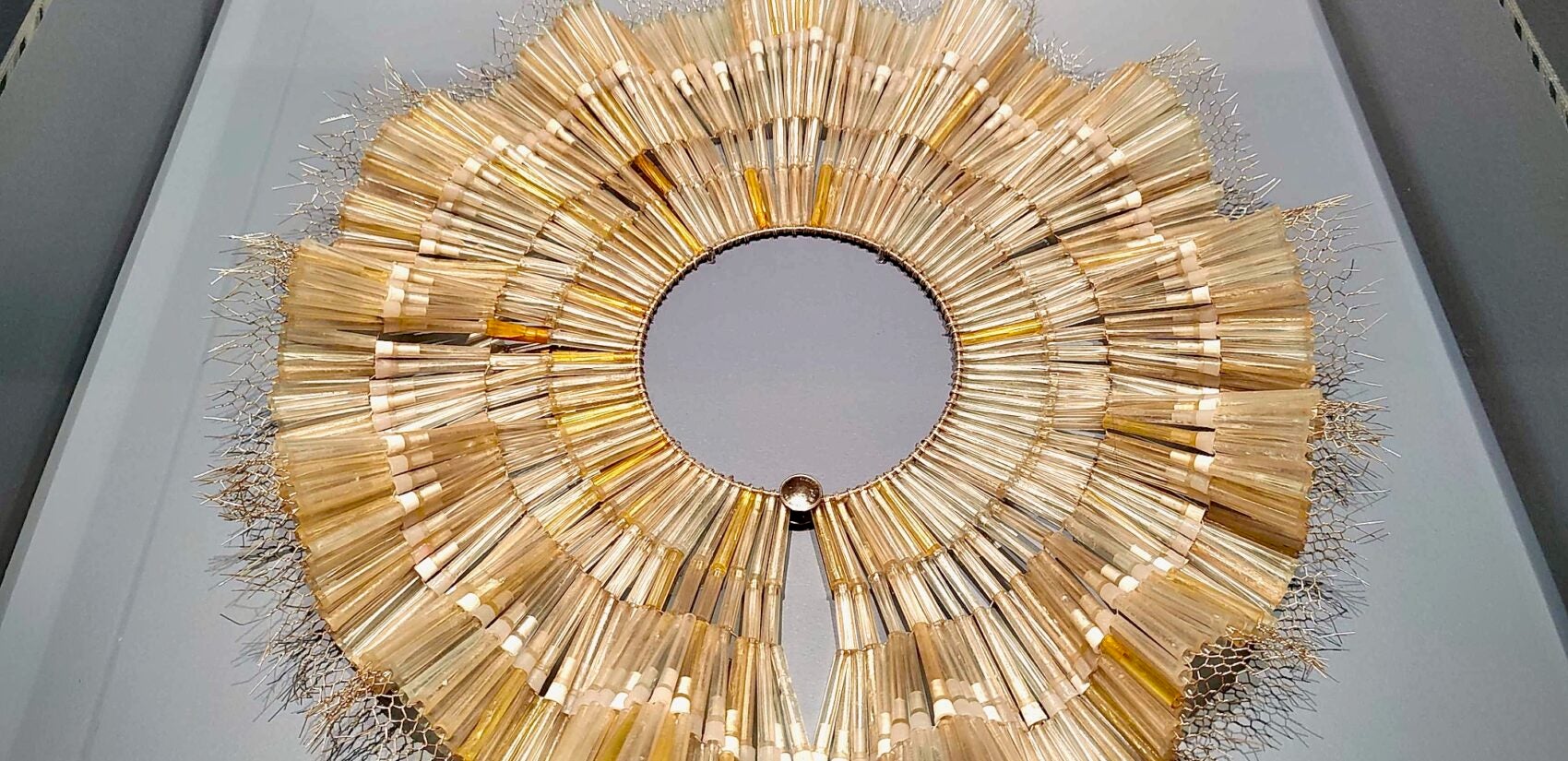
A portion of the gallery has been walled off as a screening room, presenting “Silence,” a 2016 video by Pauline Boudry and Renate Lorenz, featuring the Venezuelan singer Aérea Negrot performing John Cage’s notoriously silent composition 4’33”. She silently stands behind a bank of microphones, as though performing a mock press announcement, in the Oranienplatz square in Berlin.
The artist chose the site of the Oranienplatz (OPlatz) protest movement, where nearly 500 refugees seeking asylum encamped for two years, from 2012 to 2014, demanding Germany allow them to work and study in the country.
Although nominally silent, Cage’s 4’33” is meant to draw attention to existing environmental sounds wherever the composition is performed. The history of OPlatz is never referred to in “Silent,” nevertheless the square presents itself ambiently.
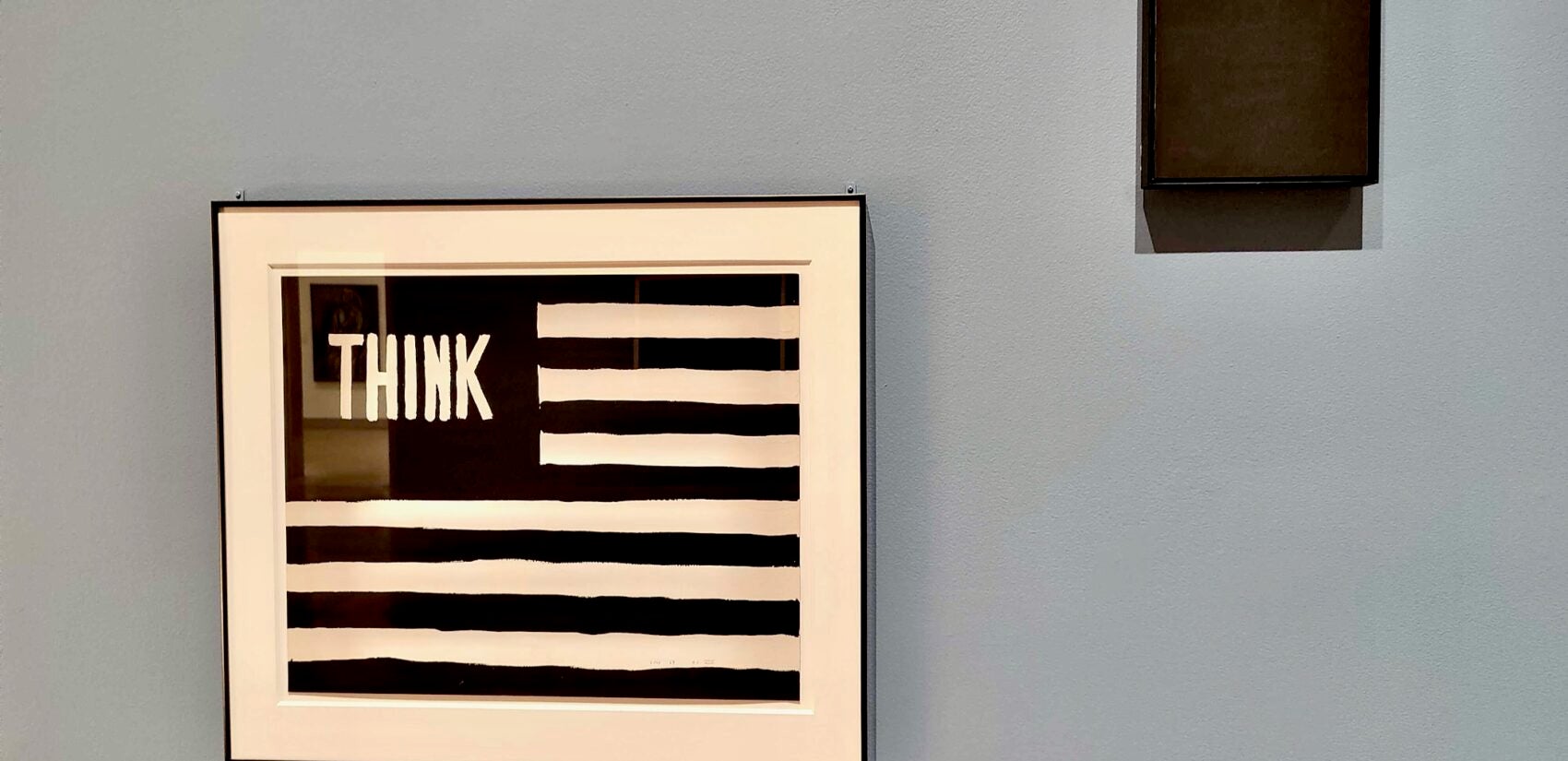
Nairne chose works that speak quietly and sometimes vaguely – Ad Reinhardt’s “Black Cross” (1967) is a solid black square with nearly invisible surface markings – which she said can communicate complex meanings.
“It doesn’t need to have one thing it’s trying to achieve, or one point it’s trying to get across. It can be multiple,” she said. “That’s one of the things that art does inherently so well, is to offer ambiguities in a culture which has become obsessed with polarities.”
“What Times are These?” runs until March 16.

Get daily updates from WHYY News!
WHYY is your source for fact-based, in-depth journalism and information. As a nonprofit organization, we rely on financial support from readers like you. Please give today.



